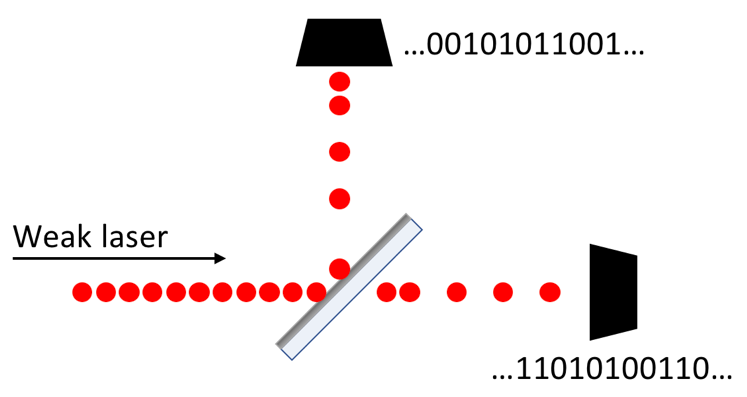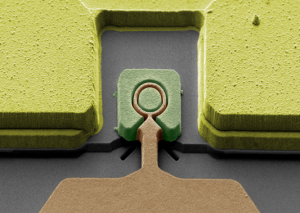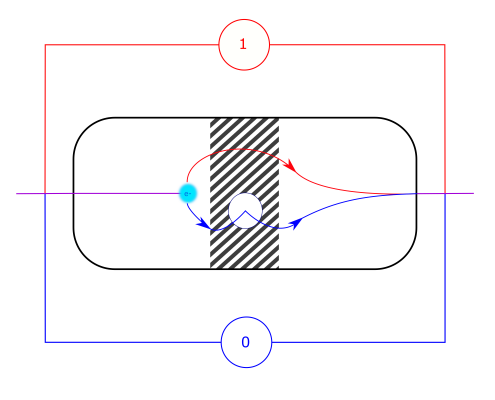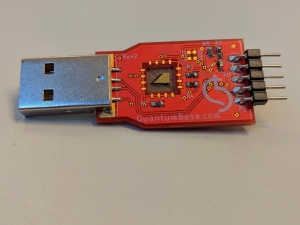Random numbers underpin a surprising amount of modern society (background information here) but unfortunately both humans and computers alike are poor at generating random numbers (read here about problem definition). Thankfully quantum physics is inherently random and researchers from Lancaster University, in collaboration with Quantum Base, have developed a simple solution to this important problem.
Fundamental particles like electrons and photons do not obey the laws of classical physics, instead we need to use quantum mechanics to describe them. To understand the difference between classical and quantum physics let’s consider a simple example.
In classical physics, if I shine light on a partially reflective surface, like a piece of glass, the light splits into two components – some travels through the glass and some is reflected from it.
The same experiment in quantum physics is subtly different. Light is stream of fundamental particles, photons. When they meet a partially-reflective surface they can’t be divided, instead they are reflected or transmitted with a certain probability. This is a key aspect of quantum mechanics, it describes everything in terms of probabilities.
This is, it turns out, very useful for generating random numbers. Consider the arrangement in Figure 1:
A stream of photons arrives at a surface that reflects or transmits each photon with a probability of 50%. Light detectors measure which of the two directions each photon takes. If the photon carries straight on it represents a ‘1’ event, and if not then a ‘0’ event. By measuring lots of photons this way a long stream of random binary digits is generated, which can be used as a true source of randomness.
This process for generating random numbers from quantum mechanics is ok, but it isn’t very practical. Most of the devices we use in our daily lives are electronic, not optical, and incorporating the arrangement above into a micro circuit is expensive.
A Simple Electronic Solution
The device we have invented uses a very similar process to the one illustrated above, but rather than using photons it uses electrons.
When electrons travel through a special type of diode, known as a resonant tunnelling diode (Figure 2), at a constant rate, they can do so at one of two voltages. We can think of this as being analogous to the two directions the photons can take in the optical experiment above. Quantum mechanics dictates which voltage each electron, or group of electrons, takes when it travels through the diode (Figure 3). By measuring this voltage we can produce a random stream of 1’s and 0’s.
The big advantage of our solution is that it can be implemented in semiconductor electronics. This will allow it to be incorporated into the processors in your computers and smart devices – making them more secure.
We can’t easily change the electronics inside existing devices, however, so we are also producing USB sticks like the one shown in Figure 4.
When this is plugged into an existing piece of electronics housing a weak random number generator, it can be configured to extract random numbers from our USB stick, rather than its compromised internal system.
Our technology could change the way that all electronic devices create and use random numbers. This has the potential to make our data more secure, prevent eavesdropping and reduce counterfeiting!
Find out more information about our QRNG solution here
Figure 1 – photons being split to create a secure key
Figure 2 – An electron microscope image of our Q-RNG device (courtesy of Prof. D. Granados, IMDEA Nanoscience, Madrid).
Figure 3: An electron (blue) reaches a barrier within our diode (hashed area). To get across, it has to either jump over the entire barrier (red) or onto a “stepping stone” and then across (blue). The choice the electron makes is unpredictable and can be measured using a voltmeter to provide a random stream of 1’s or 0’s.
Article Links
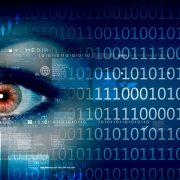
Please click on the link to read more about our solution

